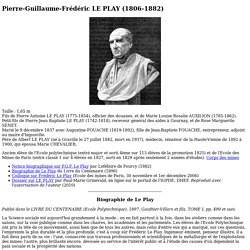

Www.carrefour.com/sites/default/files/Carrefour_Document_de_Reference_2012_0_1.pdf. Muhammad Yunus: Savar Tragedy, Garments Industry and Bangladesh. Savar tragedy is a symbol of our failure as a nation.

The crack in Rana Plaza that caused the collapse of the building has only shown us that if we don't face up to the cracks in our state systems, that we as a nation will get lost in the debris of the collapse. Today the souls of those who lost their lives in Rana Plaza are watching what we are doing and listening to what we say. The last breath of those souls surrounds us. Did we learn anything at all from this terrible massacre? Or will we have completed our duty by merely expressing our deep sympathy? What should we do? (a) Do everything to prevent such an incident from being repeat the future. (b) What to do for those who have lost lives, their limbs or their livelihoods? (c) What do we need to do to not only save our garments industry but make it even more strong? (d) The collapse of the nine-floor building in Savar was not merely a collapse.
Citizen's Action Group Questions have been raised about the future of the garments industry. Global savings glut or global banking glut? Since Bernanke’s 2005 speech (Bernanke 2005), it has become commonplace to assert that current-account imbalances were a key factor in stoking the permissive financial conditions that led to subprime lending in the US.

The ‘global savings glut’ is what Ben Bernanke called it. This phrase provided a powerful linguistic focal point for thinking about the surge in net external claims on the US on the part of emerging economies. The biggest worries concern the financial stability implications of these large and persistent current-account imbalances. But maybe the finger is being pointed the wrong way. My recent research suggests that the ‘global banking glut’ may have been more culpable for the crisis than the ‘global savings glut’ (Shin 2011). To introduce the distinction, it is instructive to start with the financial crisis in Europe. The current-account deficits of Ireland and Spain widened dramatically before the crisis (Figure 1).
Figure 1. Source: IMF International Financial Statistics. Rebels Without a Clue. O.K., a temporary government shutdown — which became almost inevitable after Sunday’s House vote to provide government funding only on unacceptable conditions — wouldn’t be the end of the world.

But a U.S. government default, which will happen unless Congress raises the debt ceiling soon, might cause financial catastrophe. Unfortunately, many Republicans either don’t understand this or don’t care. Let’s talk first about the economics. After the government shutdowns of 1995 and 1996 many observers concluded that such events, while clearly bad, aren’t catastrophes: essential services continue, and the result is a major nuisance but no lasting harm. That’s still partly true, but it’s important to note that the Clinton-era shutdowns took place against the background of a booming economy. Still, a government shutdown looks benign compared with the possibility that Congress might refuse to raise the debt ceiling. Why? No sane political system would run this kind of risk. Pour rétablir la confiance, le FMI conseille une pause fiscale à la France. Understanding the Financial Crisis - very good explanation!
Frédéric LE PLAY (1806-1882) Taille : 1,65 m Fils de Pierre Antoine LE PLAY (1775-1854), officier des douanes, et de Marie Louise Rosalie AUXILION (1785-1862).

Petit-fils de Pierre Jean Baptiste LE PLAY (1742-1814), receveur général des aides à Gournay, et de Rose Marguerite SENET. Marié le 9 décembre 1837 avec Augustine FOUACHE (1819-1892), fille de Jean-Baptiste FOUACHE, entrepreneur, adjoint au maire d'Ingouville. Père de Albert LE PLAY (né à Graville le 27 juillet 1842, mort en 1937), médecin, sénateur de la Haute-Vienne de 1892 à 1900, qui épousa Marie CHEVALIER.
Ancien élève de l'Ecole polytechnique (entré major et sorti 4ème sur 113 élèves de la promotion 1825) et de l'Ecole des Mines de Paris (entré classé 1 sur 4 élèves en 1827, sorti en 1829 après seulement 2 années d'études). Corps des mines Notice biographique sur P.G.F. Biographie de Le Play Publié dans le LIVRE DU CENTENAIRE (Ecole Polytechnique), 1897, Gauthier-Villars et fils, TOME I, pp. 499 et suiv. Le Play et les collections de l'Ecole des Mines. Classiques.uqac.ca/classiques/le_play_frederic/le_play_textes_choisis/leplay_textes_preface.pdf.